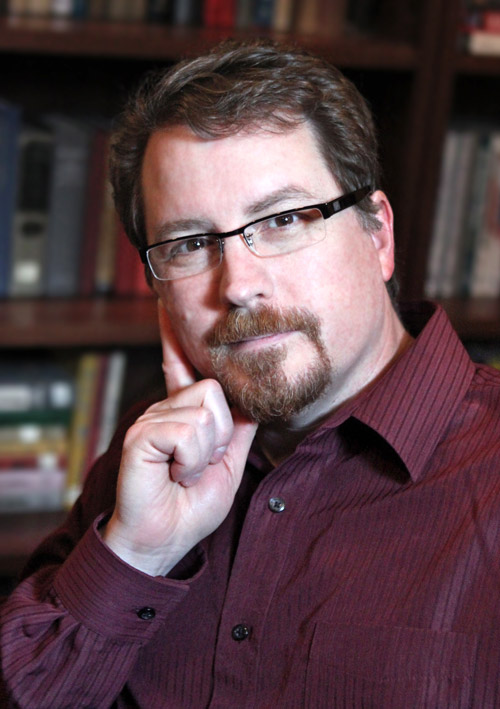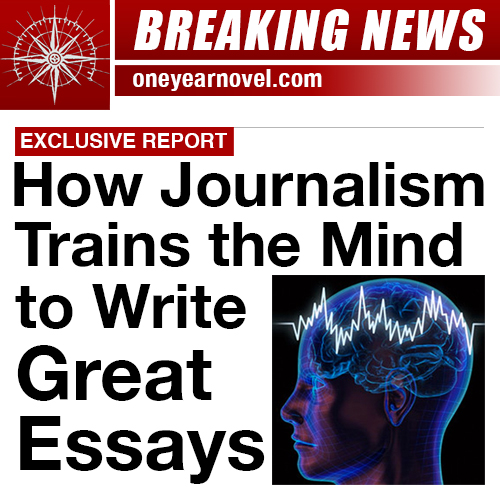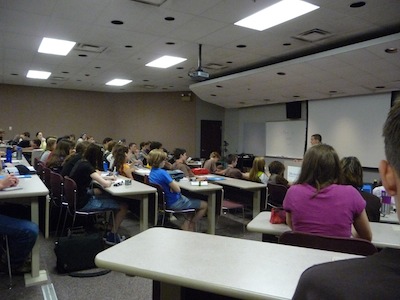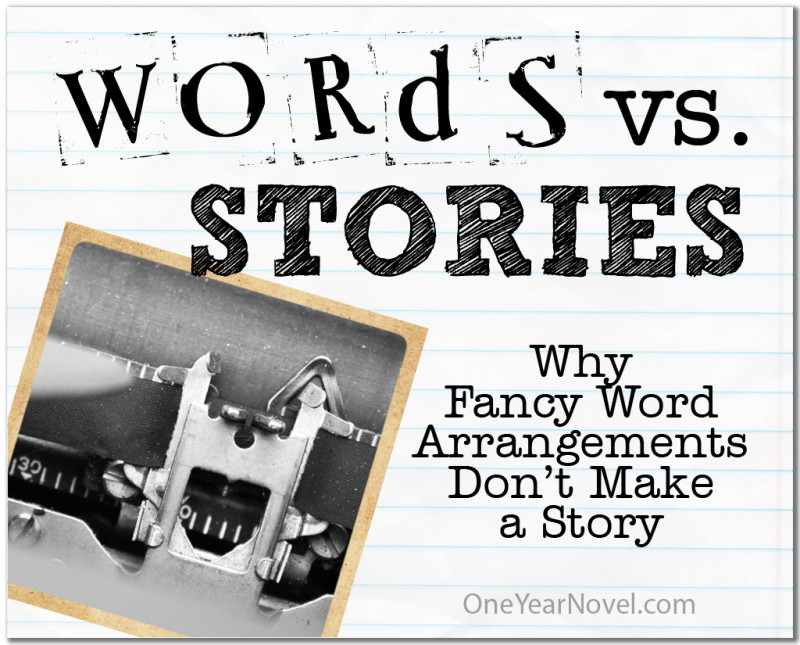How Journalism Trains the Mind to Write Great Essays
If you follow us on Facebook or get our e-newsletters, you’ve probably got wind of this year’s big announcement: I am releasing a brand-new video curriculum this summer! The past six months have been an exciting creative journey for us at Clear Water Press, and it’s rewarding to finally have the website up! The curriculum is called Byline, and, like The One Year Adventure Novel (“OYAN”), it’s designed for grades 8–12 and taught on video.
On the surface, Byline is a language arts course that focuses on journalism. Or, to be more accurate, chronojournalism. Which is my way of saying that students join me in reporting on the past. Giving readers “Yesterday’s news today.”
So, obviously, we have to study history as well. And that unique combination of language arts, journalism, and history is what gives Byline its distinctive theme. It’s why we chose the 1930s for our setting. Before World War II, big city newspapers were still the most powerful media in the world. And modern kids think of the 1930s as ancient history.
But none of this is really the point. We did NOT create Byline just to offer a quirky journalism class.
Byline actually does three things that won’t be obvious to students. First, it’s designed to teach critical thinking skills. In particular, the skills of observation, inference, analysis, and interpretation. Those skills are essential to writing, and to every other subject. But too often they’re separated from other disciplines. Writing is about putting thoughts onto paper. If you can’t think well, you won’t write well.
Second, we wanted to inoculate students against the sort of propaganda that has taken over social media. And, to be honest, pretty much EVERY form of media.
Propaganda isn’t about telling lies. It’s about creating interpretations of facts. This is why every major media outlet can both fact-check its work AND be perceived by political rivals as biased. So the student who learns to separate fact from interpretation is much harder to indoctrinate. And I think that is a worthwhile outcome, whatever your political convictions happen to be. As I tell Byline students early in the course, we’re not living in the information age. We’re living in the MISinformation age.
The third thing Byline does may be the most important, at least in terms of scholarship. It’s actually a secret I don’t reveal to students until the very last lesson. Byline teaches essay writing. Byline is my answer to the question, “How would you teach a teen to write an essay?”—a question I have received ever since releasing The One Year Adventure Novel.
The main reason it’s structured as a chronojournalism class is to remove the expectation that writing essays has to be boring. In fact, I only use the word “essay” a few times before lesson 72, and even then it’s in reference to things other than the assignment.
Modern education often sees the essay as a canvas for academic jargon. So we make students memorize latinate terms like exposition and delineation and empirical persuasion—which is fine—but we don’t tell them why these terms matter or what they can be used for. We take the storytelling out of it. We suck out the conflict and the humor and the personality, and then expect them to learn to be good writers by outlining a five-paragraph theme about the Freudian implications of blood in Macbeth.
It’s crazy. And it gets even worse after high school. I was once invited to the English Department of a local college to meet with the department head. She wanted to talk to me about their requirements for incoming homeschool students—what they expected homeschoolers to be capable of in order to be admitted. At the end, she handed me a double-sided, single-spaced document that, as I recall, was around 10,000 words long. They gave this document to incoming students. And the point was to spell out what the college expected from them in terms of their English classes.
The problem was, it didn’t spell anything out, because it wasn’t written in English. It was written in educational jargon. Which is sort of like English, only different.
Well, I read through the first few pages and said, “You know, I have a Masters degree in English. I even graduated with honors. And I have no idea what this document says. You can bet those incoming students won’t either. In fact, I guarantee you: they aren’t even reading this.”
Now, I’m not saying that English professors are looking for jargon in their Freshmen and Sophomore essays. On the contrary, I think most professors would agree with me that such writing is the bane of their existence.
The problem is, by the time most students get to college, they think this is what good academic writing is supposed to look like. College professors then have to wage a frustrating war of red ink. They have to strip students of the illusion that making sentences longer and grammatically obtuse somehow makes them more literary.
The opposite is true. Clarity of thought and presentation will set any college student apart. For that matter, it will set any WRITER apart. C.S. Lewis wasn’t just admired for his imagination. One of the main reasons his work endures is that he was so good at saying profound things in a simple way.
He knew the jargon. He just avoided it. And I can promise you that a student who practices essay writing using a more relaxed and personable style—for instance, the style employed by journalists—will have a huge advantage over students who don’t. When most English professors encounter a student who thinks clearly, supports her conclusions with evidence, and makes an argument in a conversational style, they are delighted. They start saving that student’s papers to read last, like dessert.
And those three things are, coincidentally, what chronojournalism teaches: clarity of thought, supporting research, and a conversational style.
Byline is essay writing—even academic writing—without the horrible feelings that are usually attached to it.
And, yes, Byline does prepare students for possibly the most dreaded aspect of writing college essays: citations. While I don’t require citations on every assignment, I train my “student reporters” to support their journalism with sources, and to record these sources in their Notebook. At the end of the course, when the students compile their articles, I ask them for a Works Cited page (or pages). It’s not something I would make an 8th grader do, but for grades 10 and above, it’s a very good idea. The payoff is that students will learn and practice a skill they’ll have to use frequently when they go to college. It will make their courses less intimidating later on.
Charles Lipson’s book Cite Right, published by the University of Chicago Press, is an excellent resource for this. I don’t know the author and I’m not getting anything out of my recommendation; I just think his book is very clear about how to do citations. It’s the sort of thing students can take to college and use over and over. You should be able to find a copy at the library or buy one online for under ten bucks.
And that’s it. Byline in a nutshell. My answer to the question, “How would you teach a teen to write an essay?”
…
 Daniel Schwabauer, MA, is the creator of The One Year Adventure Novel and Cover Story Writing creative writing courses. His professional work includes stage plays, radio scripts, short stories, newspaper columns, comic books and scripting for the PBS animated series Auto-B-Good. His young adult novels, Runt the Brave and Runt the Hunted, have received numerous awards, including the 2005 Ben Franklin Award for Best New Voice in Children’s Literature and the 2008 Eric Hoffer Award. His third book, The Curse of the Seer, released in the summer of 2015.
Daniel Schwabauer, MA, is the creator of The One Year Adventure Novel and Cover Story Writing creative writing courses. His professional work includes stage plays, radio scripts, short stories, newspaper columns, comic books and scripting for the PBS animated series Auto-B-Good. His young adult novels, Runt the Brave and Runt the Hunted, have received numerous awards, including the 2005 Ben Franklin Award for Best New Voice in Children’s Literature and the 2008 Eric Hoffer Award. His third book, The Curse of the Seer, released in the summer of 2015.


